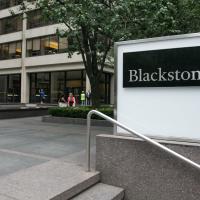The world’s financial institutions will face more securities write-downs combined with rising loan losses in the second half, according to a new report from Standard & Poor’s Ratings S
The world’s financial institutions will face more securities write-downs combined with rising loan losses in the second half, according to a new report from Standard & Poor’s Ratings Services entitled Global Financial Institutions Eye Another Wave of Write-Downs as U.S. Housing Woes Spread.
‘The overlap of these two phases may prove to be the most difficult test yet for the battered global financial sector,’ says Standard & Poor’s credit analyst Scott Bugie, who says the fresh write-downs are likely to stem from a combination of turbulent capital market conditions and continuing negative news from the US mortgage market.
While the financial industry has raised a huge amount of capital over the past year to compensate for securities losses, the report argues that current market conditions are less favourable, leaving financial institutions to face the next wave of write-downs with reduced opportunities to raise additional capital.
‘Success in future capital-raising, through issues or asset sales, to compensate for additional securities write-downs will be the key factor driving credit ratings on many global financial institutions in the second half of this year,’ Bugie says.
The pain of the global financial industry remains largely linked to the declining fortunes of the US housing sector. Securities backed by US mortgage loans have lost hundreds of billions of dollars in value since the summer of 2007 and losses has spread beyond the sub-prime sector, which represents only 10 to 15 per cent of residential real estate borrowing in the US, to other pressured areas of housing finance.
Three prominent players, Citigroup, Merrill Lynch (which has agreed to be acquired by Bank of America) and UBS account for 40 per cent of the more than USD300bn in write-downs of mortgage-backed securities and leveraged loans taken through the first half of 2008.
Beyond that concentration, write-downs have been spread geographically and by institution. Intermediaries and investors across the globe took part in the financing of highly leveraged US households during the boom years, the report says, and consequently are bearing their share of losses from the decline.
The rare true sales of non-prime mortgage-backed securities in 2008 have been at depressed prices, S&P notes, arguing that the ‘stunning’ collapse of Lehman Brothers and the unwinding of the group’s trades surely will place additional downward pressure on values of non-prime securities via forced sales under unfavourable market conditions.
While the report estimates that the global industry has probably passed the halfway mark for write-downs, a wider range of mortgage-backed securities segments are at risk and all segments have deteriorated in recent months.
S&P expects financial institutions with material residual balances of non-prime securities to take significant additional write-downs in the second half of the year – something that has already begun with the third-quarter earnings reports from US broker-dealers.






